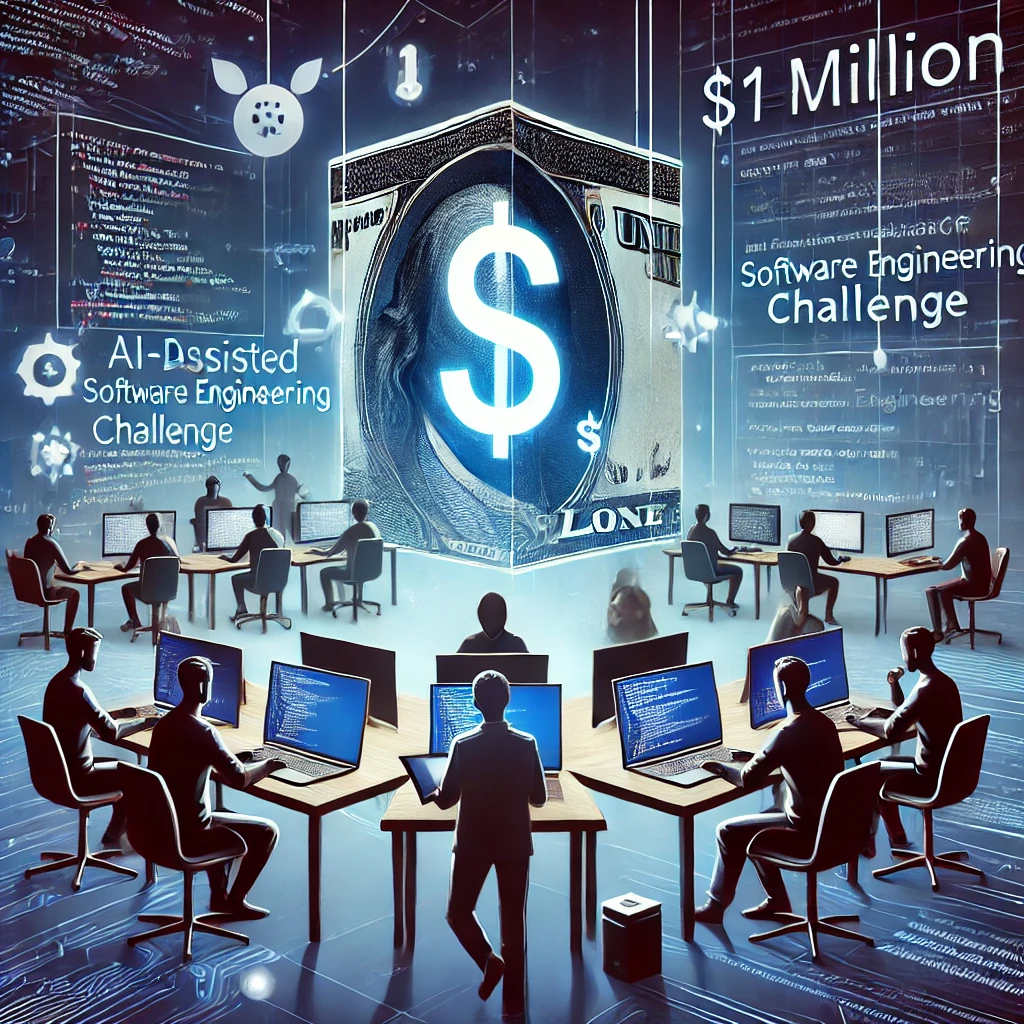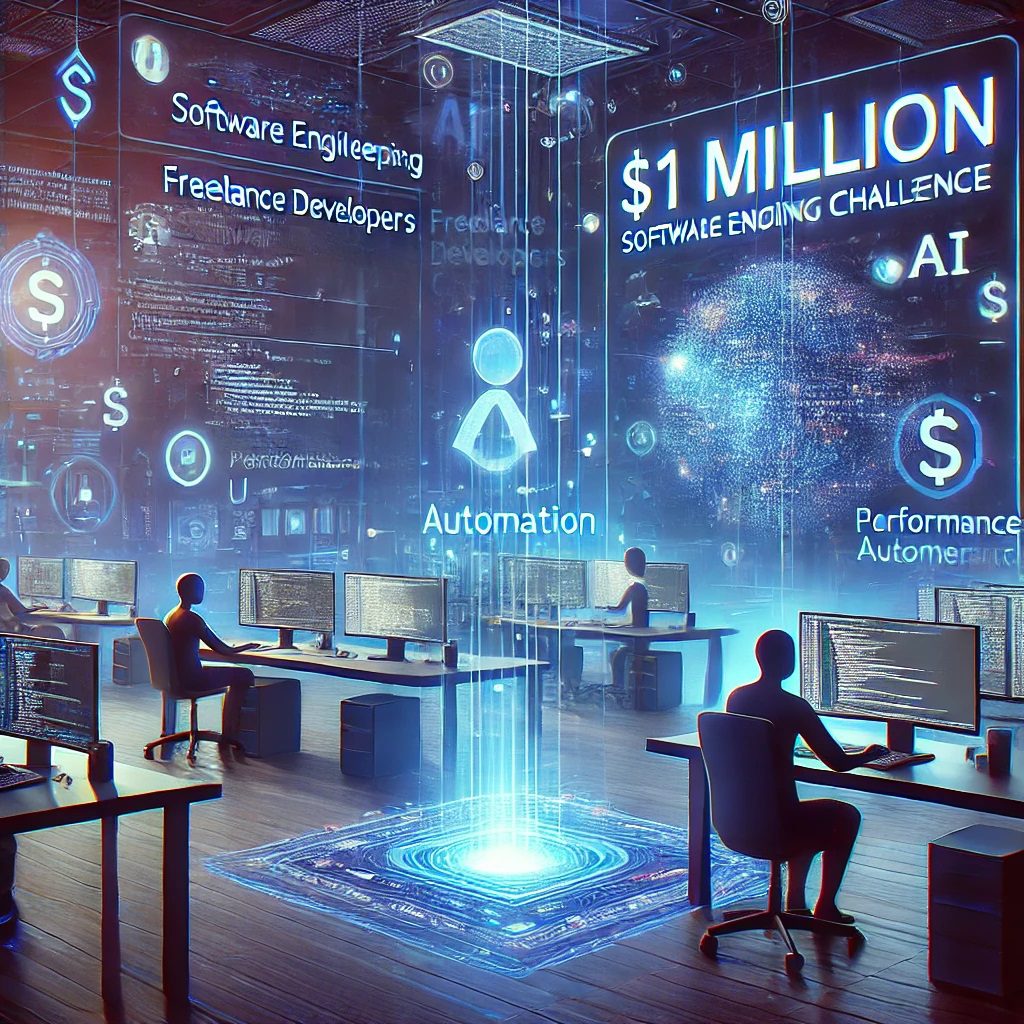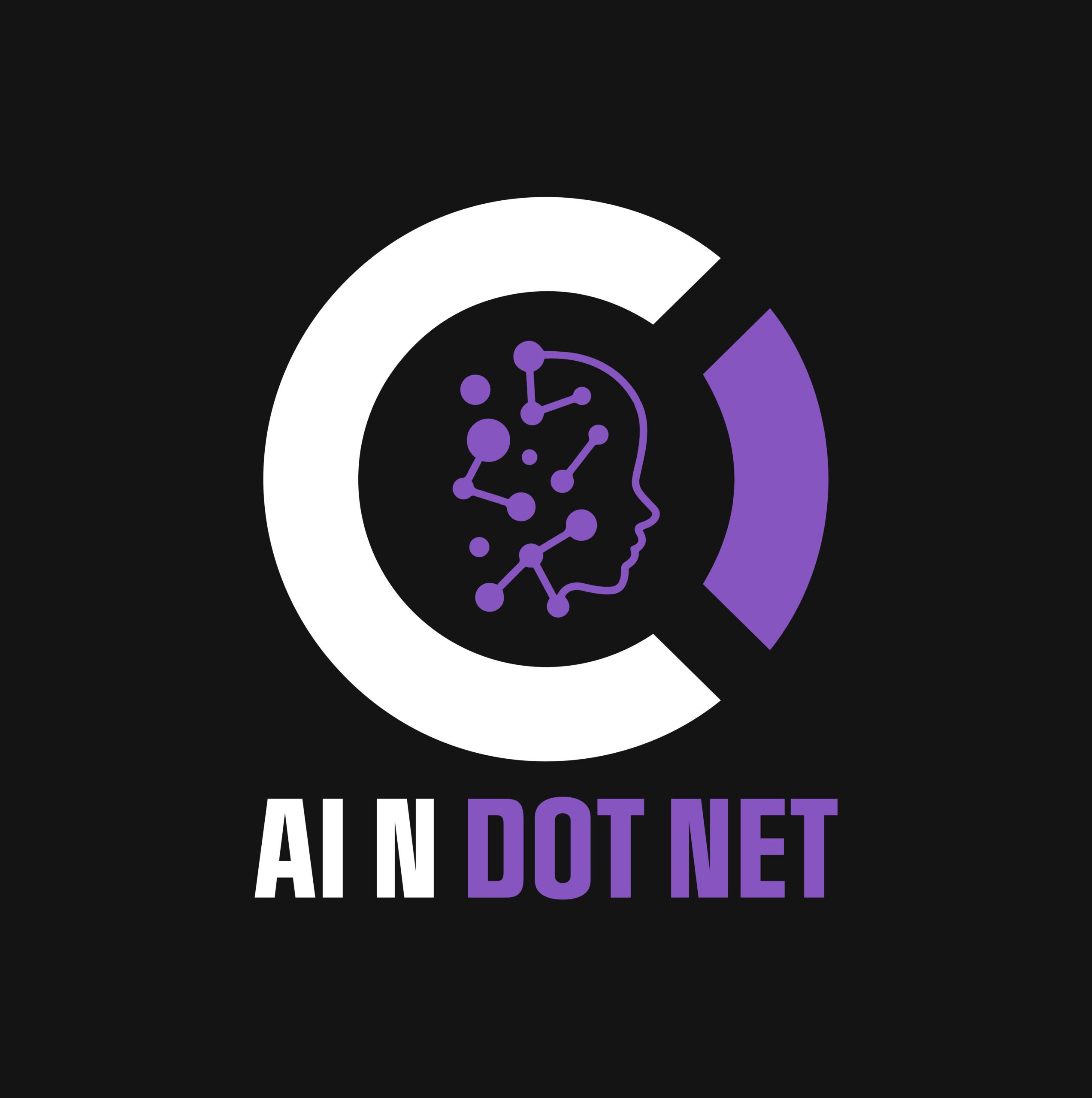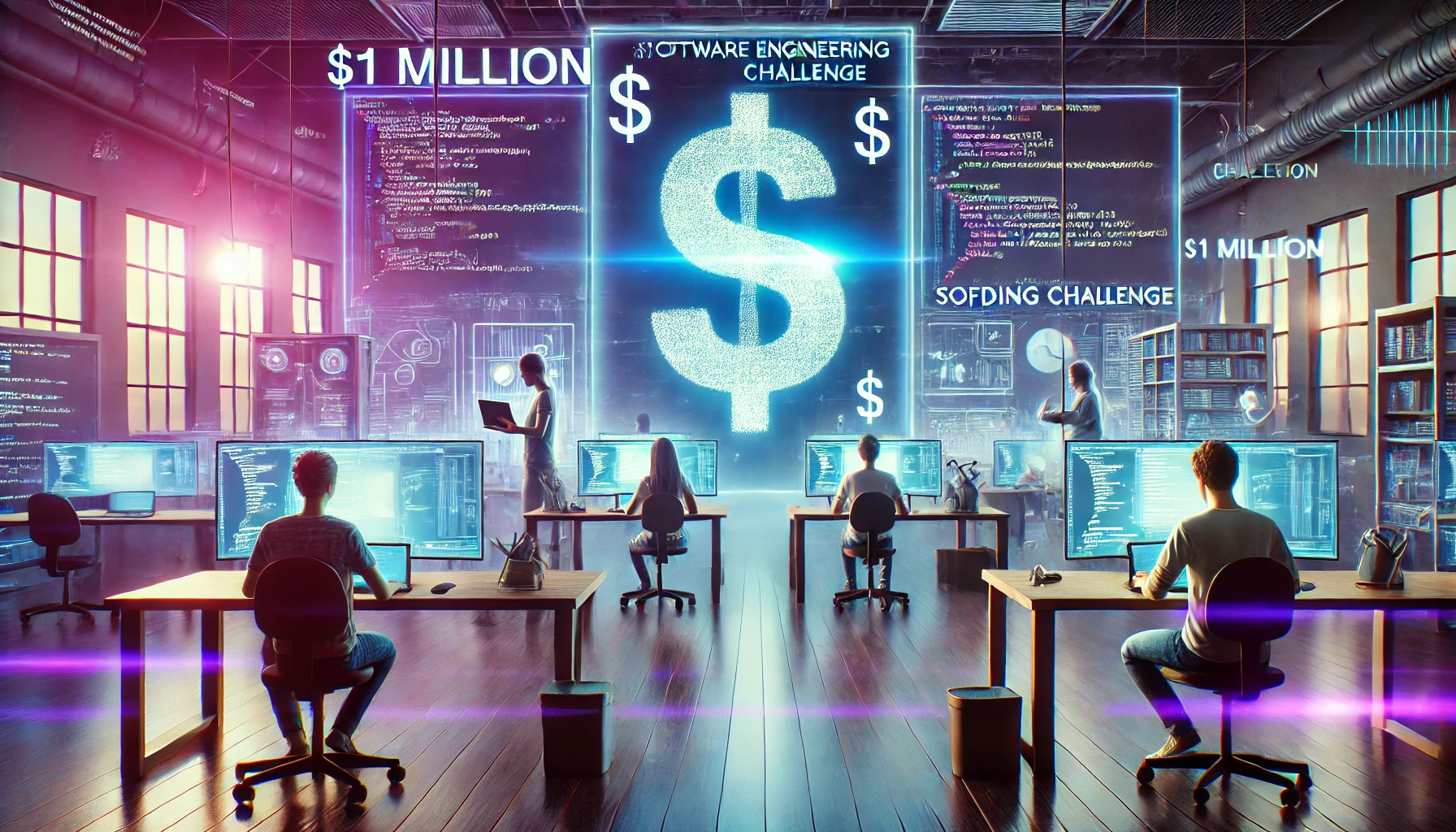Introduction
Modern enterprises—especially those relying on Microsoft servers, Azure, and .NET frameworks—face complex coding challenges that demand scalable solutions. Frontier AI holds promise in addressing these challenges, but are current AI code generation tools really ready for prime time?
A recent initiative, SWE-Lancer, tested advanced AI models on real-world freelance software development tasks totaling $1 million in payout. This article explores how medium-to-large businesses and government agencies can leverage insights from this groundbreaking benchmark to streamline development on Microsoft platforms.
What Is SWE-Lancer?
SWE-Lancer is an AI software development benchmark comprising over 1,400 genuine freelance tasks from the open-source Expensify repository. Each task comes with an actual payout, reflecting its real-world complexity. The tasks are split into two categories:
- IC (Individual Contributor) SWE Tasks – Full-stack coding assignments that demand end-to-end solutions, not just single-function fixes.
- SWE Manager Tasks – Decision-making challenges where AI must evaluate multiple proposals and select the best technical approach.
This dual approach makes SWE-Lancer stand out. It not only measures raw coding ability but also tests whether AI can handle managerial functions typically performed by a senior developer or team lead.
Why It Matters for Microsoft-Based Enterprises and Government Agencies
Complexity of Microsoft Ecosystems

Large organizations often use Windows Server, Azure Cloud, and custom .NET services. These systems can be deeply interwoven, making the development process more complex. SWE-Lancer’s real-world tasks capture that complexity, showing how AI handles multi-file changes, diverse APIs, and user-facing interfaces simultaneously.
Compliance and Security
Government agencies and enterprises in regulated industries (e.g., finance, healthcare) cannot compromise on data handling. A missed validation or security oversight can lead to compliance violations. While AI code generation can speed up repetitive tasks, SWE-Lancer reveals that oversight from human developers remains crucial for tasks with security or compliance implications.
Immediate ROI Potential
SWE-Lancer’s results highlight that AI can reliably solve smaller bugs and repetitive tasks with minimal oversight. For Azure-centric environments, setting up continuous integration (CI) pipelines ensures AI-generated code undergoes thorough checks before deployment. This can translate into faster go-to-market timelines, fewer bottlenecks, and reduced development costs.
SWE-Lancer Findings and Performance Insights
High-Level Metrics
- Top Models: Leading systems like Claude 3.5 Sonnet and GPT-4 variants solved up to 26% of the coding tasks and nearly 45% of managerial tasks.
- $1 Million in Freelance Payouts: The benchmark aligns model performance with potential economic outcomes.
Implications for Larger Projects
- Automation of Routine Tasks: AI excels at smaller, self-contained bugs—ideal for backlog cleanup in .NET or SharePoint projects.
- Need for Iteration: More complex tasks often require multiple attempts, reinforcing the need for a human-in-the-loop approach.
- Managerial Role: AI showed promise in proposal selection, but real-world engineering management involves team coordination, regulatory compliance, and long-term architectural vision, which still require experienced human leaders.
Our Take: AI for Coding & Database Tasks Is Still Limited
We frequently test AI models as they evolve, and in our experience, AI for database queries and coding tasks remains very limited. While new frontier AI models are improving, past iterations have often been unreliable—at best offering minor assistance, and at worst, leading us down wasteful tangents.
The ChatGPT 03-mini-high model, however, represents a notable improvement. While we wouldn’t trust AI for complex, mission-critical .NET development, there are specific scenarios where AI can provide real value.
For example, we specialize in .NET development and rarely work with WordPress or PHP. In those cases, rather than digging through documentation or searching Google for outdated Stack Overflow answers, we’d probably ask ChatGPT 03-mini-high for a quick resolution. It’s a time-saver for small, simple tasks in unfamiliar domains.
That said, AI remains a tool—not a replacement. Large-scale enterprise software development requires human oversight, strong architecture, and a deep understanding of compliance, security, and integration across Microsoft environments.
Best Practices for Enterprise AI Adoption
Start Small and Scale

Launch pilot projects in non-critical areas. By confining AI-driven coding to smaller modules, you can evaluate accuracy and reliability without risking mission-critical components.
Integrate with Azure DevOps
Use Azure Pipelines to automate testing of AI-generated pull requests. This ensures every code commit—human or AI-created—meets the same quality and security standards.
Combine Human and AI Expertise
Deploy a human-in-the-loop workflow. Have senior developers or architects review AI-suggested changes, focusing on cross-service compatibility (e.g., microservices, Azure Functions) and regulatory concerns (e.g., FedRAMP or HIPAA compliance for government agencies).
Maintain Robust Testing
Follow the SWE-Lancer approach of end-to-end (E2E) testing. This means validating the entire user flow (e.g., logging in, interacting with UI forms, backend data checks) rather than relying solely on unit tests.
Addressing Limitations and Future Outlook
No AI is perfect, and SWE-Lancer’s results highlight a few key gaps:
- Context Scope – Models can lose track of large codebases, leading to superficial fixes or partial solutions.
- Managerial Nuance – While AI may identify strong proposals, high-level project oversight—deadlines, budget constraints, stakeholder communication—still demands human judgment.
- Security Reviews – AI can inadvertently introduce vulnerabilities; always pair code generation with automated security scanning tools compatible with Microsoft environments.
Looking forward, refinements in AI reasoning, multimodal capabilities, and extended context windows could push success rates even higher—especially if Microsoft-based frameworks are included more systematically in training data.
Conclusion and Next Steps
SWE-Lancer is a powerful reality check for enterprise software development. While frontier AI models proved capable of handling smaller, well-defined tasks, they struggled with more intricate issues typical of large-scale Microsoft-centric projects.
Key Takeaways
- Partial Automation: AI can reduce development overhead by tackling routine tasks or triaging bug backlogs.
- Ongoing Human Oversight: Government agencies and large enterprises must include seasoned developers for complex tasks, compliance checks, and final approvals.
- Future-Ready Roadmap: As AI continues to evolve, expect deeper integration with .NET and Azure, enabling more seamless automation across diverse codebases.
By combining SWE-Lancer insights with robust DevOps pipelines, code scanning, and a measured rollout strategy, medium-to-large businesses and government agencies can harness AI’s strengths while minimizing risk. The result? Faster product cycles, cost savings, and a development process that’s ready for the next wave of AI transformation.
Want to stay ahead in applied AI?
Subscribe to our free newsletter for expert insights, AI trends, and practical implementation strategies for .NET professionals.
📑 Access Free AI Resources:
- Download our free AI whitepapers to explore cutting-edge AI applications in business.
- Check out our AI infographics for quick, digestible AI insights.
- 📖 Explore our books on AI and .NET to dive deeper into AI-driven development.
References
https://arxiv.org/pdf/2502.12115
Disclaimer
We are fully aware that these images contain misspelled words and inaccuracies. This is intentional.
These images were generated using AI, and we’ve included them as a reminder to always verify AI-generated content. Generative AI tools—whether for images, text, or code—are powerful but not perfect. They often produce incorrect details, including factual errors, hallucinated information, and spelling mistakes.
Our goal is to demonstrate that AI is a tool, not a substitute for critical thinking. Whether you’re using AI for research, content creation, or business applications, it’s crucial to review, refine, and fact-check everything before accepting it as accurate.
Lesson: Always double-check AI-generated outputs—because AI doesn’t know when it’s wrong! 🚀

